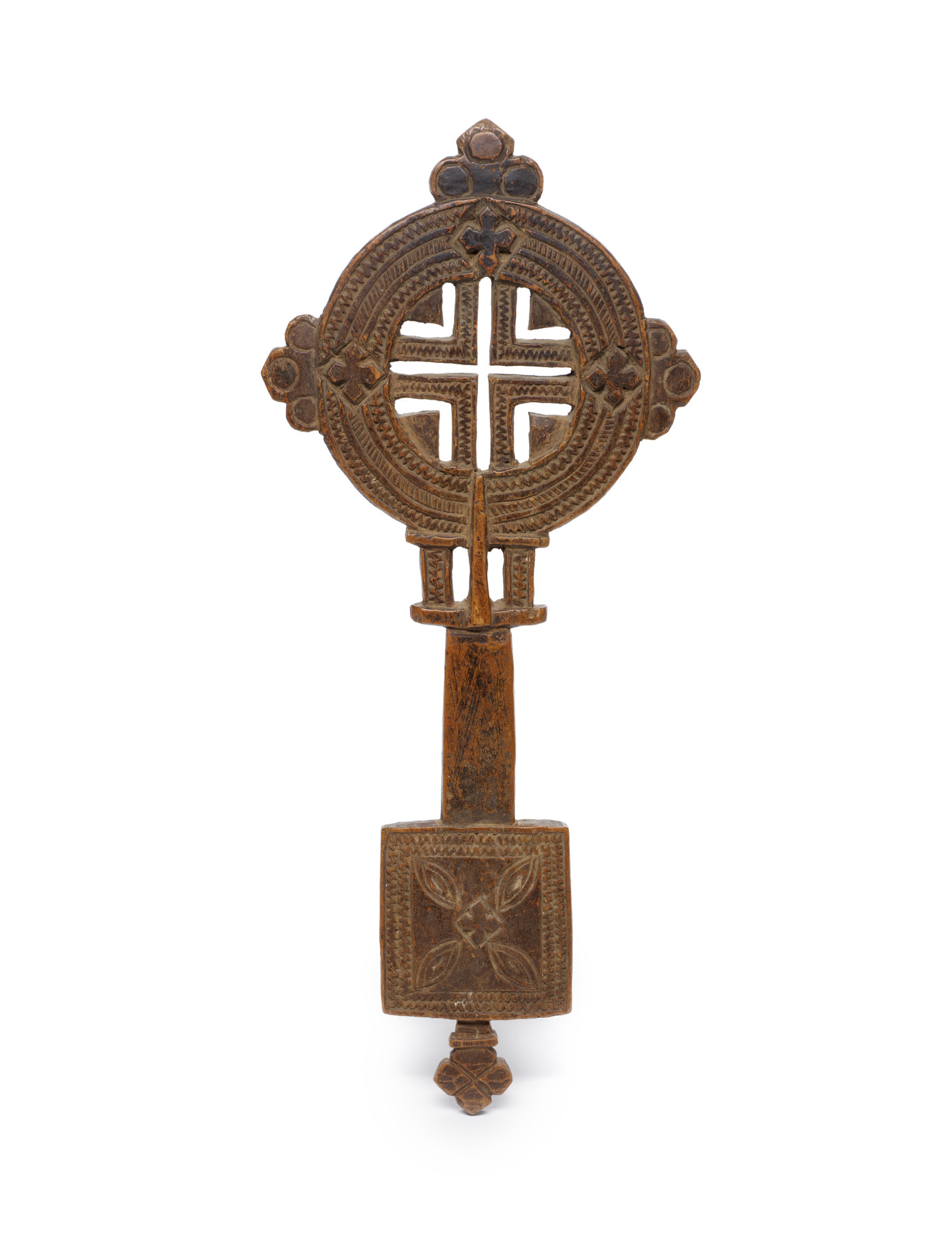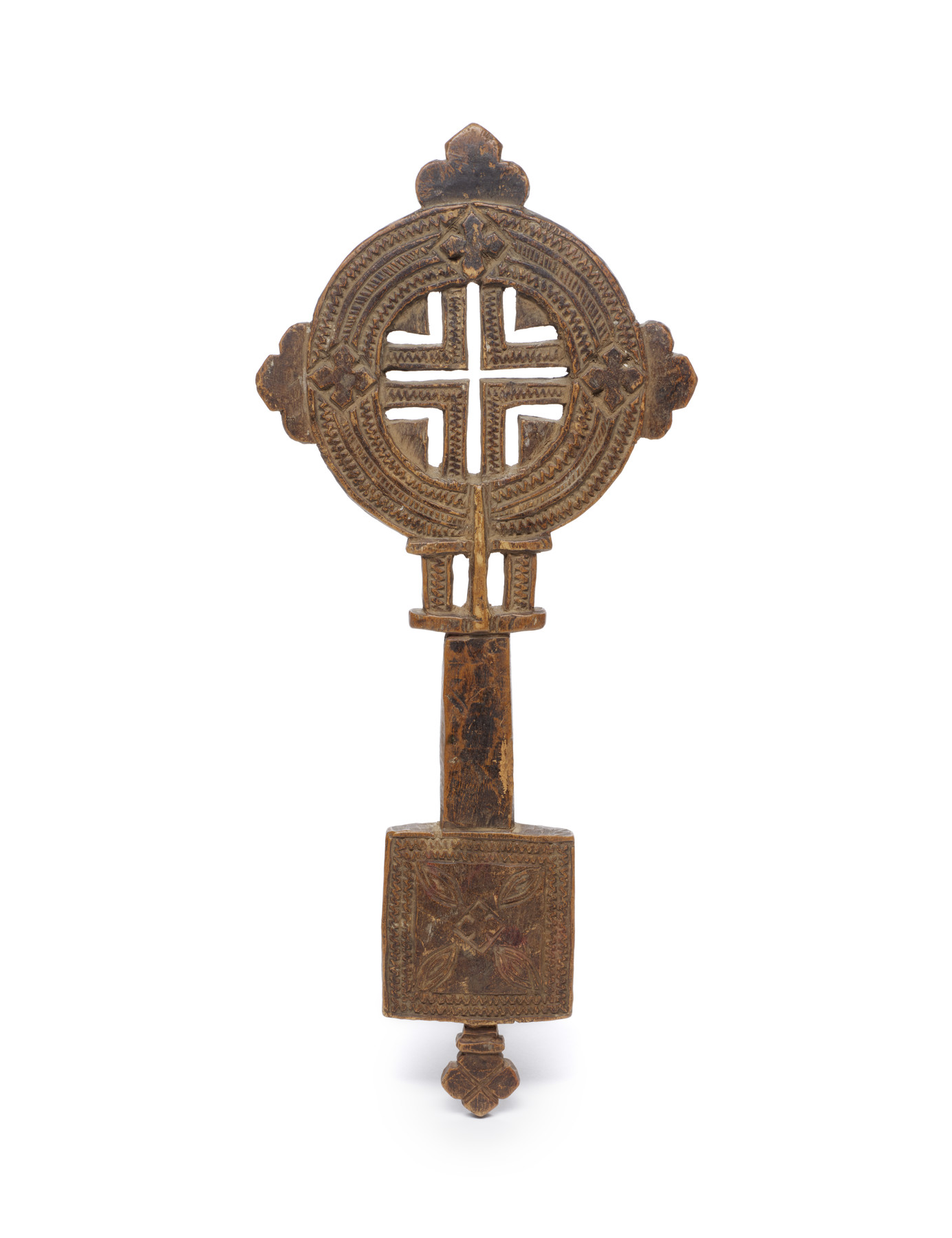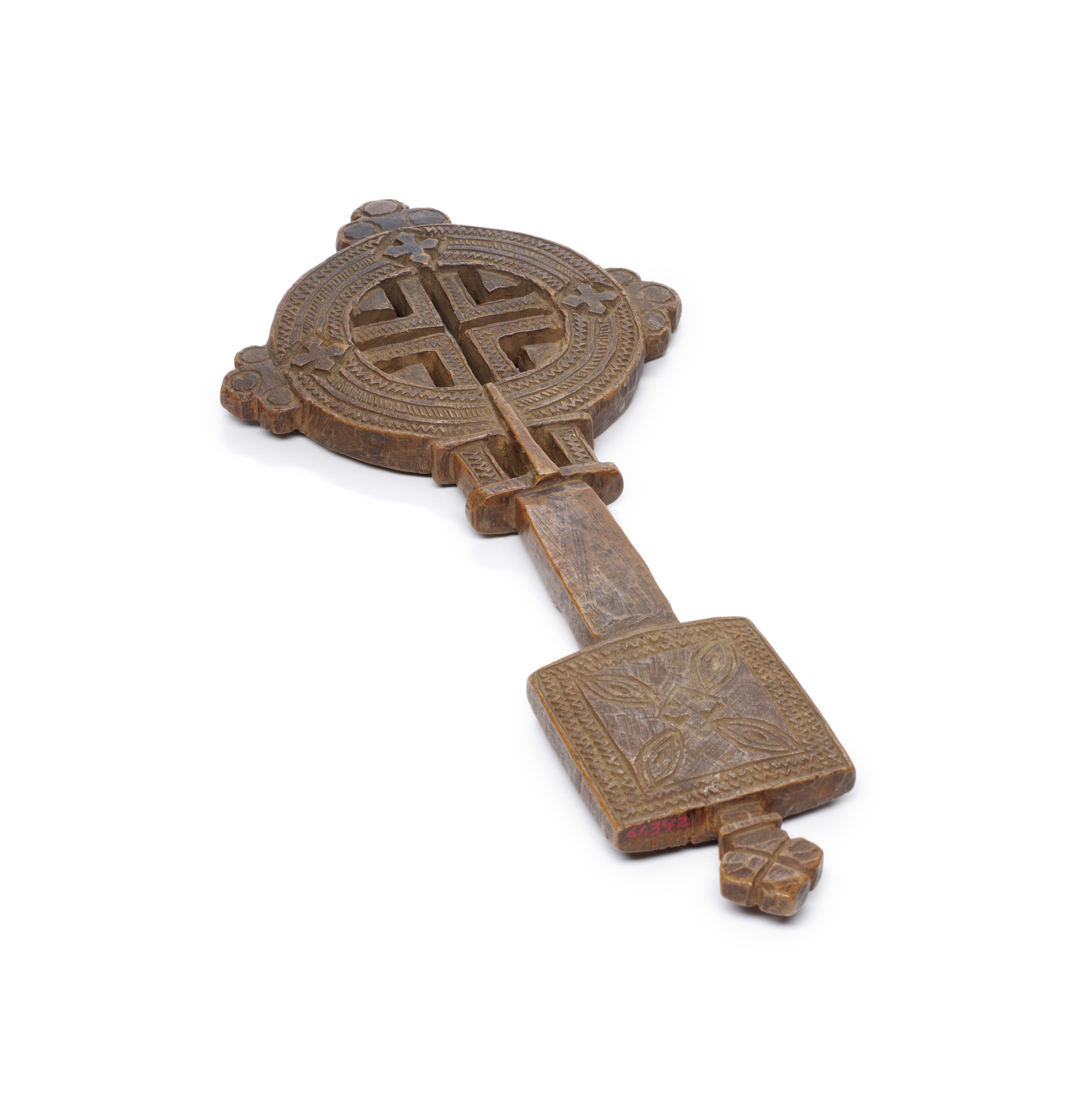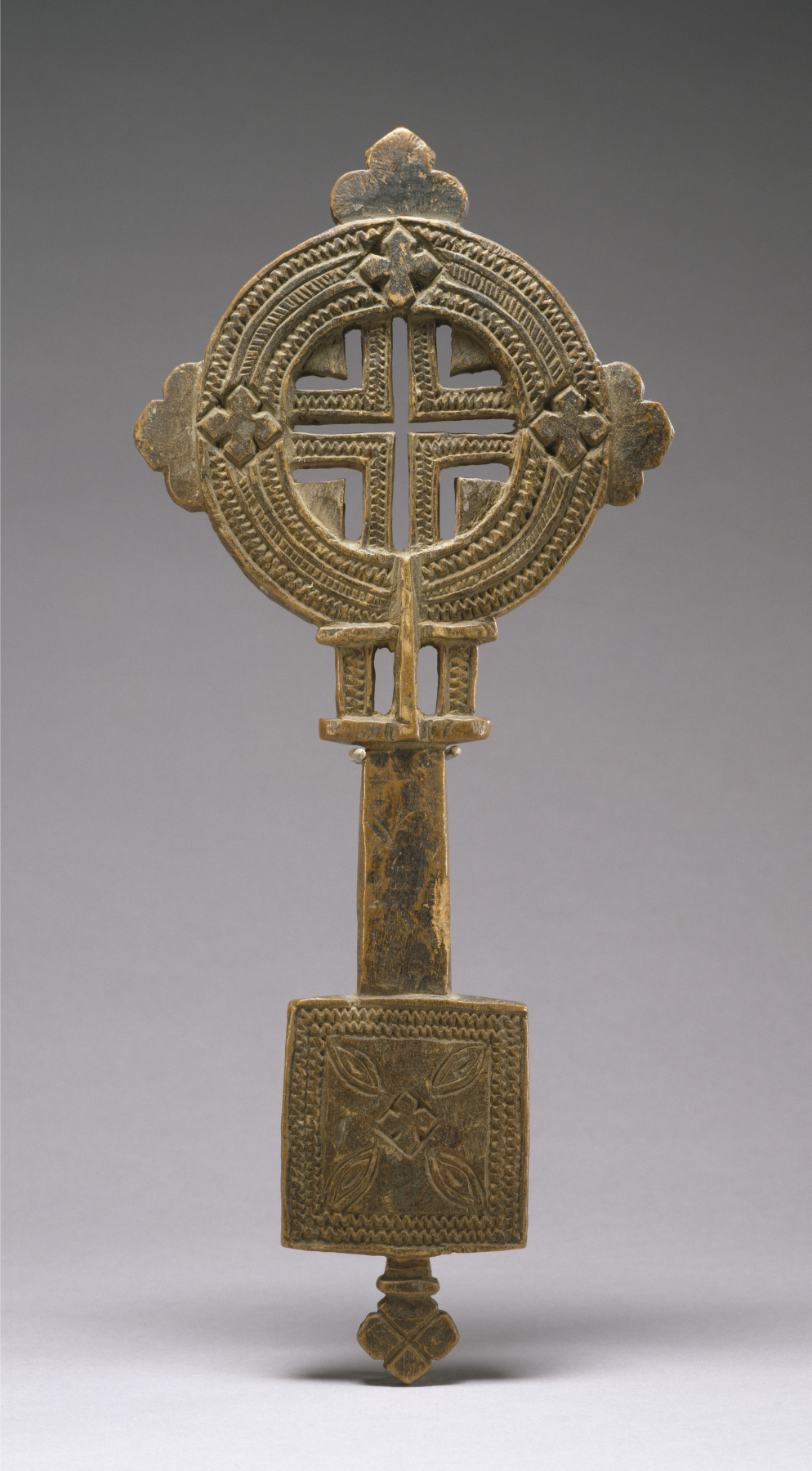Hand Cross
(Ethiopia)
Hand-held crosses, called hand or benediction crosses, are carried by Ethiopian priests and offered to the faithful to be kissed during church services. Made out of metal or wood, the crosses are also used by priests to bless holy water and to perform exorcisms. Beginning in the 16th century, hand crosses also appear as signs of victory in icons and manuscripts, where they are held by saints, archangels, and even the resurrected Christ.
This object has a conventional design, but the cross in the center appears in silhouette. As a result, during benedictions this opening could be used to project a cruciform shadow onto the object or person receiving the blessing. The rectangular base may be interpreted as a reference to the tabot, or carved altar box, venerated by Ethiopian Christians.
Provenance
Provenance (from the French provenir, 'to come from/forth') is the chronology of the ownership, custody, or location of a historical object. Learn more about provenance at the Walters.
Anonymous dealer, Addis Ababa, Ethiopia; Richard Hubbard Howland, 1963, by purchase; Walters Art Museum, 1998, by gift.
Exhibitions
| 2006-2007 | Angels of Light: Ethiopian Art from the Walters Art Museum. Birmingham Museum of Art, Birmingham; Smith College Museum of Art, Northampton; Museum of Biblical Art, New York. |
Geographies
Ethiopia (Place of Origin)
Measurements
H: 14 9/16 x W: 6 5/16 x D: 7/8 in. (37 x 16 x 2.2 cm)
Credit Line
Gift of Richard Hubbard Howland, 1998
Location in Museum
Centre Street: Third Floor: Byzantine, Russian, and Ethiopian Icons
Accession Number
In libraries, galleries, museums, and archives, an accession number is a unique identifier assigned to each object in the collection.
In libraries, galleries, museums, and archives, an accession number is a unique identifier assigned to each object in the collection.
61.342








